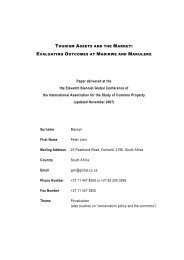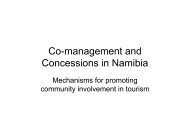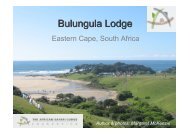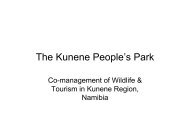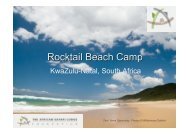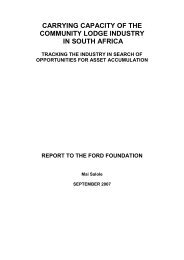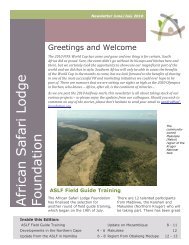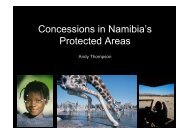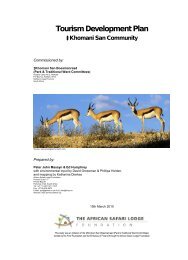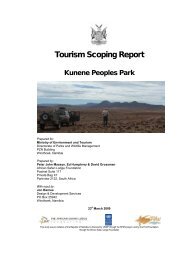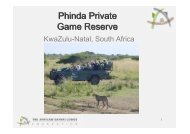socio-economic research on manda wilderness, lago district, niassa ...
socio-economic research on manda wilderness, lago district, niassa ...
socio-economic research on manda wilderness, lago district, niassa ...
Create successful ePaper yourself
Turn your PDF publications into a flip-book with our unique Google optimized e-Paper software.
Community names are given in both Chinyanja and Portuguese as the spelling can differ. Communities<br />
are also sometimes referred to by the title name of the Chief (Regulo) or the Sub Chief (Nduna).<br />
Complete data for Matepwe, Mandambuzi, Lukambwe and Chissindu was not available.<br />
3.2.2 Indicator 2: Livelihood Activities<br />
Agriculture is a core activity for all rural households but the sole activity for virtually n<strong>on</strong>e. Livelihood<br />
strategies vary between the lakeshore and inland communities but a comm<strong>on</strong> strategy is for household<br />
members to undertake a range of activities which each in some way c<strong>on</strong>tributes to <strong>on</strong>e or more of<br />
household needs. Most households rely <strong>on</strong> natural resource uses and off-farm income from paid<br />
employment or petty trade. Estimates of formal employment and other activities in each community in<br />
May 2006 were provided by the MW Community Liais<strong>on</strong> Officer. Data compiled included:<br />
a) Total number of people in formal employment e.g. teachers, lodge staff in the community.<br />
b) Number of permanent employees at the lodge and MWAP from the community.<br />
c) Number of c<strong>on</strong>tract workers at the lodge and MWAP from the community.<br />
d) Type of goods (e.g. vegetables) supplied to the lodge by the community.<br />
e) Ec<strong>on</strong>omic activities were rated as making a minor, moderate or major c<strong>on</strong>tributi<strong>on</strong> to<br />
livelihoods in the community:<br />
- Livestock<br />
- Farming<br />
- Fishing<br />
- Hunting<br />
- Harvesting of natural resources<br />
- Paid employment (n<strong>on</strong>-tourism)<br />
- Micro and small enterprises (MSEs)<br />
- Tourism (permanent and c<strong>on</strong>tract work).<br />
f) Main cash crops grown in the community.<br />
g) Number of grocery shops in the community.<br />
h) Number of locally owned guesthouses in the community.<br />
i) Number of maize mills in the community.<br />
Table 2 Estimated Paid Employment and Supply Chain to MWL in Communities<br />
Indicator: 2. a b c d<br />
Lakeshore Paid Permanent C<strong>on</strong>tract Supplies<br />
Community Work MWL/MWAP MWL/MWAP to MWL<br />
1 Uchesse 2 0 0<br />
2 Chigoma 5 0 0 vegetables<br />
3 Mataka 5 2 1 vegetables, grass<br />
4 Chikaya 2 2 0 grass<br />
5 Khango 14 0 1 vegetables, grass, hardwood, bricks, bamboo<br />
6 Ut<strong>on</strong>ga 9 4 5 vegetables, grass, bricks, bamboo<br />
7 Mala/Namisi 21 6 12 grass, fish<br />
8 Mbueca 45 20 22 vegetables, grass, hardwood, bricks, bamboo<br />
Sub-Total 103 34 41<br />
Inland<br />
9 Magachi 1 0 0<br />
10 Matepwe 1 0 0<br />
11 Mc<strong>on</strong>dece 2 0 0<br />
12 Litanda 0 0 0 vegetables, grass, bamboo<br />
13 Mandambuzi 14 6 5 vegetables, grass, bamboo<br />
14 Lukambwe 0 0 0<br />
15 Chissindo 1 0 0<br />
Sub-Total 19 6 5<br />
Total 122 40 46<br />
8



